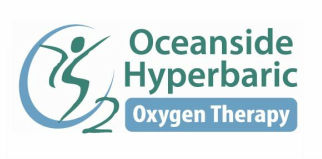Delayed Radiation Injury
|
|
Delayed radiation injury or Osteoradionecrosis is a complication resulting from radiation therapy that often manifests itself years down the road. Radiation destroys the blood supply to bone, as well as killing the cells responsible for bone building and remodeling. Some bones are especially sensitive to this damage, particularly those with poor vasculature and/or those with a high turnover rate.
Soft tissues are also susceptible to radiation damage. Delayed radiation injury to soft tissue destroys the blood vessels, nerves and cells responsible for laying down collagen. The combination of delayed radiation injury to bone and soft tissue can lead to serious debilitation, pain, loss of teeth and persistent wounds. |
Treatment of delayed radiation injury is approved by the Undersea and Hyperbaric Medical Society (UHMS.) In Canada, the Medical Services Plan (MSP) will cover the cost of hyperbaric oxygen therapy (HBOT) when treated in a hospital setting. Approved indications treated at a private facility like Oceanside Hyperbaric, are not covered by MSP, however, many clients prefer to stay close to home rather than travel to Vancouver for treatment. Often, treatment at our facility is less expensive than the travel and accommodation costs in Vancouver.
In order to qualify for treatment in a hospital in Canada, the delayed radiation injury usually requires progression to the point of bone or tissue loss. The early application of HBOT, either as a preventative or proactive measure, may be beneficial in halting the progression, reducing the recovery time and the risk of complications with delayed radiation injury. This can only be achieved at a private facility like Oceanside Hyperbaric.
The UHMS has the scientific rationale posted on their Delayed Radiation Injury page. The treatment protocol that is used is called the Marx Protocol.
HBOT has been scientifically proven to:
In order to qualify for treatment in a hospital in Canada, the delayed radiation injury usually requires progression to the point of bone or tissue loss. The early application of HBOT, either as a preventative or proactive measure, may be beneficial in halting the progression, reducing the recovery time and the risk of complications with delayed radiation injury. This can only be achieved at a private facility like Oceanside Hyperbaric.
The UHMS has the scientific rationale posted on their Delayed Radiation Injury page. The treatment protocol that is used is called the Marx Protocol.
HBOT has been scientifically proven to:
- stimulate fibroblasts to increase collagen deposition
- promote new blood vessel growth (angiogenesis)
- stimulate osteoclasts (bone resorbtion)
- stimulate osteoblasts (bone building)
- delivers oxygen to hypoxic tissues
- reduces pain
- Increases stem cell circulation
Delayed Radiation Injury in the Media
- The UK's Daily Mail, September 2010 article by Isla Whitcroft, Radiotherapy saves millions from cancer but can inflict cruel damage, now, at last, there may be an answer...
- The UK's Daily Mail, May 2013 article by Kate Wighton, How a diving chamber heals damage left by prostate cancer treatment.

